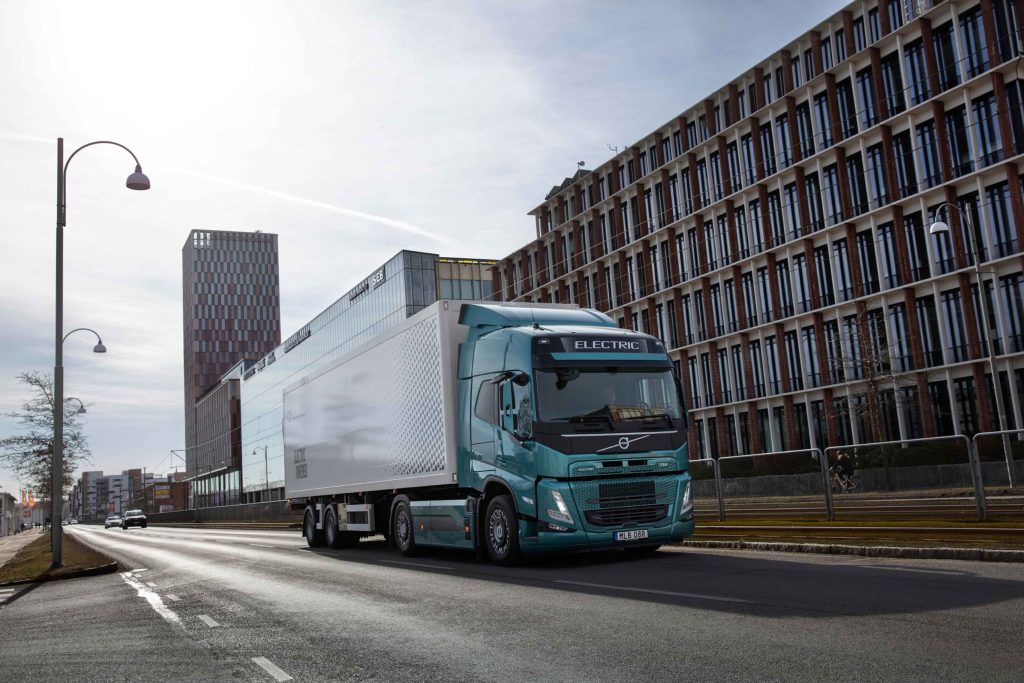Sunday Times Supply Chain
Trucking Into A Zero-Emissions Future
On 20 July 2020, the Siberian town of Verkhoyansk inside the Arctic circle recorded a daily temperature of 38°C. That is 18°C higher than the area’s daily average maximum for the period and slightly less than the temperature on the same day in Riyadh, Saudi Arabia. The drums of climate change denialists are much less loud these days as it becomes clear that our planet’s atmosphere is heating up – and fossil fuels are the leading culprit.
Many different activities have contributed to that rise in temperature, but the transport sector is one of the largest. Estimates vary, though experts agree that 10-20 per cent of global carbon comes from vehicle exhausts. As such, there is substantial emphasis on replacing internal combustion engine (ICE) vehicles with electric vehicles (EVs).
Yet although a lot of the public’s focus rests on cars, buses and trucks also need to go electric. While these modes of transport are more efficient for the larger loads they carry, on a gross average their emissions are still staggering.
According to UK consultancy group Commercial Fleet, a truck travelling just shy of 200 000km a year produces 223 tonnes of CO2 – roughly the same as 14 people in the developed world. And the European Commission found that around a quarter of traffic carbon emissions on EU roads come from heavy commercial vehicles.
Trucks and buses scale better, though: for every 160km, a car with one person produces 40kg of carbon per capita, whereas a full bus brings that figure down to 6kg, according to the Center on Globalization, Governance & Competitiveness. Electrifying trucks and buses could enormously affect carbon levels, especially if public transport and improved logistics are a part of the picture.
Trucking to Electric Avenue
Commercial electric vehicles (CEVs) define that portion of the market not concerned with passenger vehicles. The sector does not get as much attention as sexier electric sedans and SUVs, and only a handful of incumbent manufacturers work in the space, including Daimler, JAC and Volvo. Several start-ups are also looking to carve an EV niche among commercial vehicles, such as BYD from China and several US-based companies, including Nikola Corporation and Rivian.
Yet it can be a volatile space for newcomers, due to nervous investors. For example, Rivian’s share price shot up on the news that Amazon would buy 100 000 of its CEV delivery vans, then dropped when Amazon also announced a deal with Stellantis (formerly Fiat Chrysler.) Even though the Rivian deal still stands, this nonetheless spooked shareholders.
Thus we can reasonably expect that the big push for CEVs will come from established brands that transportation companies know. Commentators often point to Volvo Trucks as an emerging leader in the electric truck market – not hard to believe, considering it has unveiled six different heavy commercial electric trucks. But the company takes a broader strategy towards reducing carbon that isn’t limited to CEVs.
“Some examples of recent developments are gas-powered and fully electric trucks, and the electro-mobility journey is accelerating with more products and services,” says Eric Parry, senior manager for sustainability at Volvo Trucks South Africa. “Even in a future where the majority of vehicles are electric, we still foresee a need for ICEs, but then running on biofuels. Two promising fuels are hydrogenated vegetable oil and bio-LNG (a highly sustainable version of liquefied natural gas, also called LBG). The advantage of these fuels is that they can reduce fossil emissions today, to a large extent using existing technology and infrastructure.”
Daimler Trucks is another name that regularly pops up in CEV discussions. Several concepts are waiting in the wings, including two heavy transport trucks and an electrified school bus. One, the eM2, is already in limited service.
“We are clearly committed to the Paris Climate Accords and we want to have a significant part in shaping the future of CO2-neutral transport,” says Maretha Gerber, vice president of sales and marketing for Daimler Trucks & Buses Southern Africa. “Having CO2-neutral transport on the road by 2050 is our ultimate goal.
“The electrification road map will start by addressing the short-distance distribution (up to 300km range) application, then move to medium-distance distribution (up to 500km range), and then the long-distance application of 1 000km and above. This has already started and will be rolled out in the next five-to-10 years.”
Extending range is an important goal for the industry. Currently, Daimler’s eCascadia truck claims a range of around 400km on a gross weight of 27 tonnes. The Volvo FH Electric’s specs claim a gross combination weight of up to 44 tonnes and a range of 300km. Though the record for the longest electric truck distance without a recharge is over 1 000km (set by Futuricum), 300-400km is currently the general benchmark. Such numbers indicate that CEVs have a larger hill to climb than their passenger contemporaries.
Inner-city travel
While the aforementioned numbers aren’t exactly great for long-haul applications (unless you add a few recharge stops along the way), the case is much stronger for urban uses. Chinese manufacturer JAC is one of the groups focusing on lighter CEVs, with models of up to 12 tonnes. JAC claims its N55 EV truck can cover 300km with a 2.5-tonne load, and sees the efficiencies of running a CEV fleet as a big selling point.
“Transport operators in the logistics industry are constantly under pressure to find the cheapest route to a destination,” says Karl-Heinz Göbel, CEO of JAC Motors South Africa. “Therefore, electric fleets make much more sense than the traditional ICE approach. Reliable data on the grassroots level is being gathered to showcase the tremendous benefits and cost savings when logistics companies migrate to CEV fleets and renewable energy resources, for example solar panels at warehouses and distribution centres, the optimisation of charging stations and so forth.”
JAC is also looking at the public transportation market and is importing a panel van to test its viability for local taxi services. These trials will ultimately decide the future of CEVs in the country, Göbel notes. “Valuable operational data will be collected to plan for the future roll-out of our range of EV products in the country.”
The same goes for local buses. Last year, BYD imported two EV buses in a joint trial with Golden Arrow Bus Services (GABS). Their performance will inform the possibility of more such vehicles, wrote GABS company engineer Gideon Neethling in a statement: “For the first few months, we tested the buses in a range of circumstances without passengers. The aim was to get to know exactly how these vehicles perform before incorporating them into our operations. Testing these vehicles has been a joy for everyone who is part of the project. Each time we carry out a new test or reach a new milestone, the level of excitement increases further.”
Excitement may be great, but commercial acceleration is essential. Deadlines to phase out ICE transport are at most 17 years away, and cities such as Moscow have already stopped buying diesel-powered buses. Several companies, such as Volvo, are proponents of hybrid commercial choices such as trucks using LNG. Hybrids might be the near-term solution to the short timelines and the transport market’s performance requirements, until fully electric trucks can carry the load.
If local policy reflects an earnest intention to switch to cleaner emissions, it would help a lot, says Gerber. “The first step is to make clean fuel mandatory, then move vehicle emission standards to Euro 5 or Euro 6 as a country as soon as possible. This will show the rest of the world that we are also serious about protecting the environment. It would be difficult to talk about CO2 reduction and saving the planet if your own backyard were not in order.”





